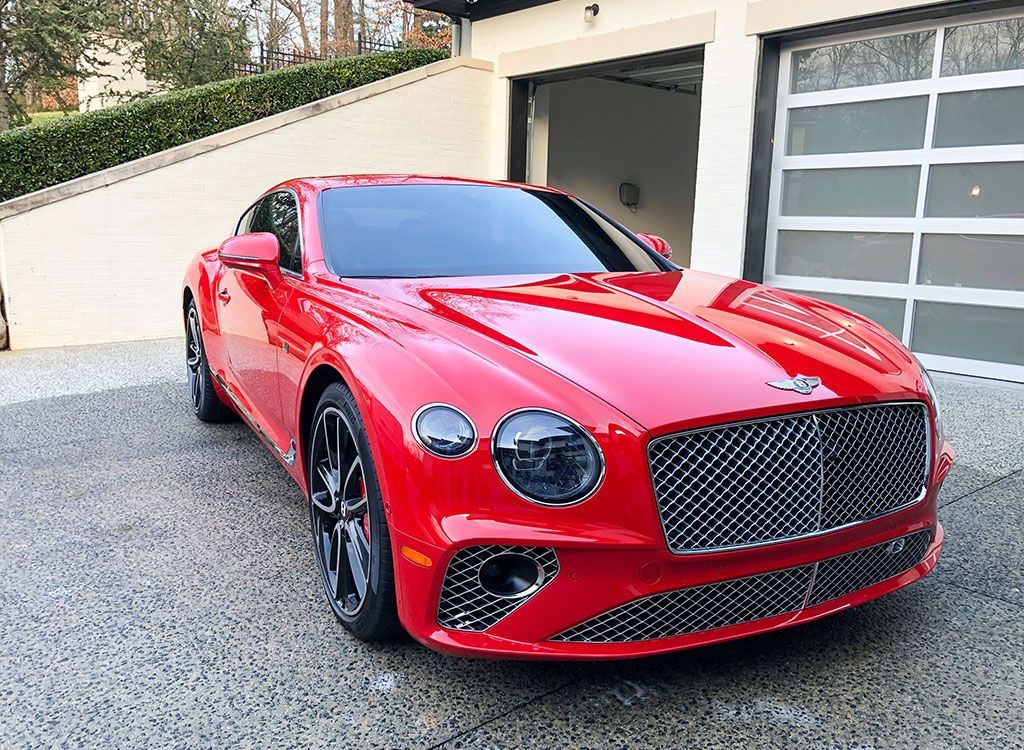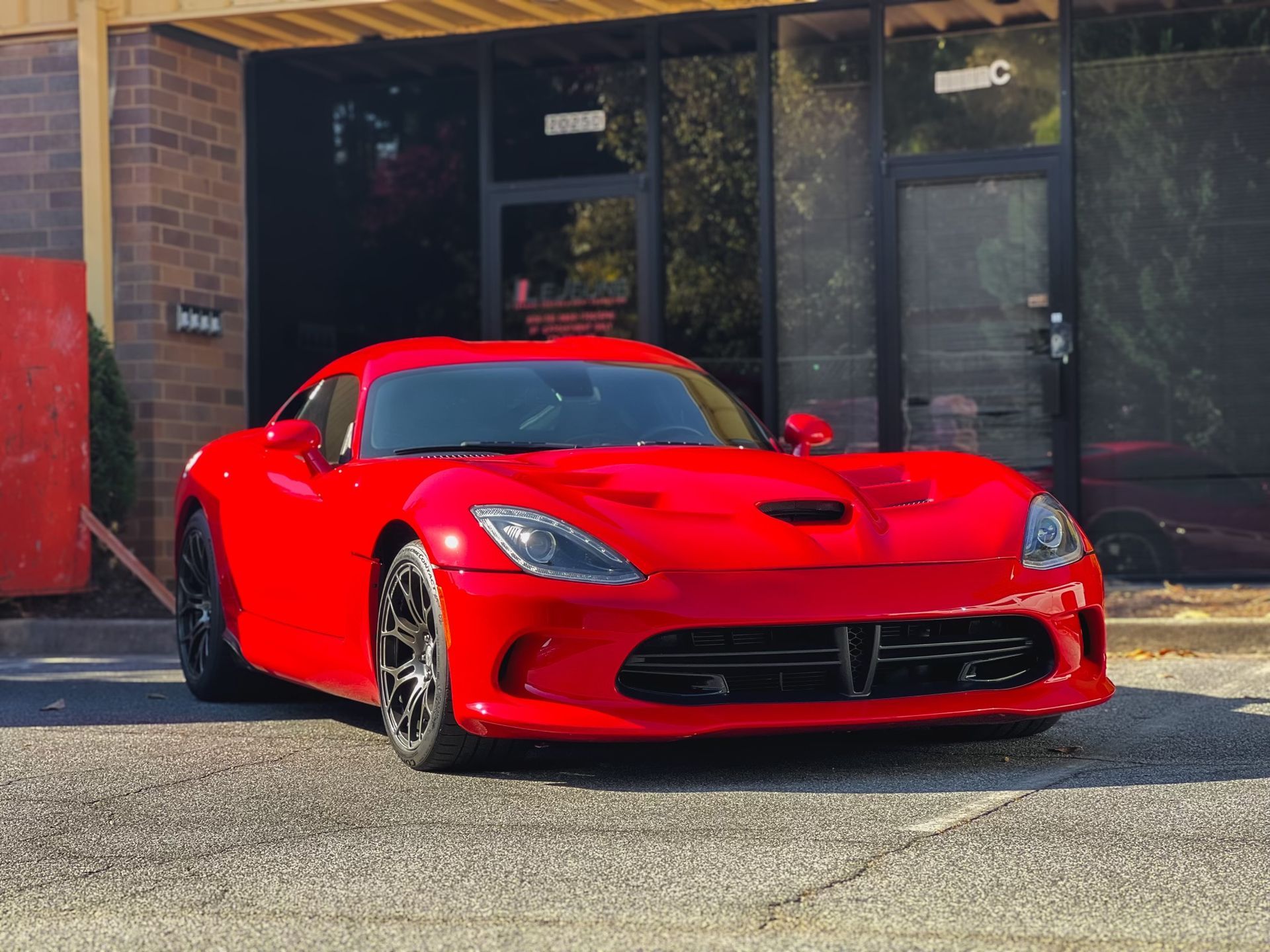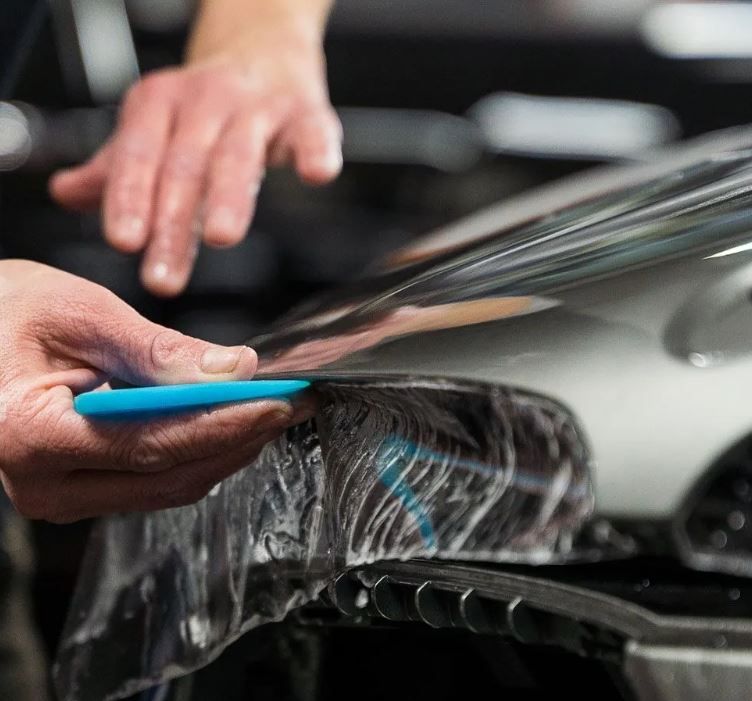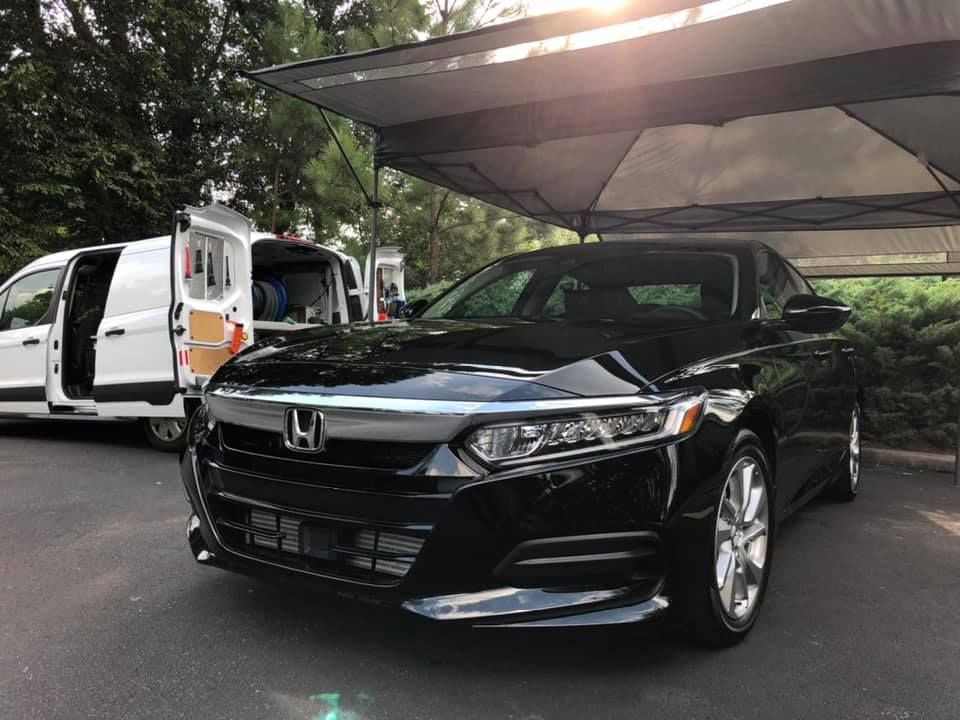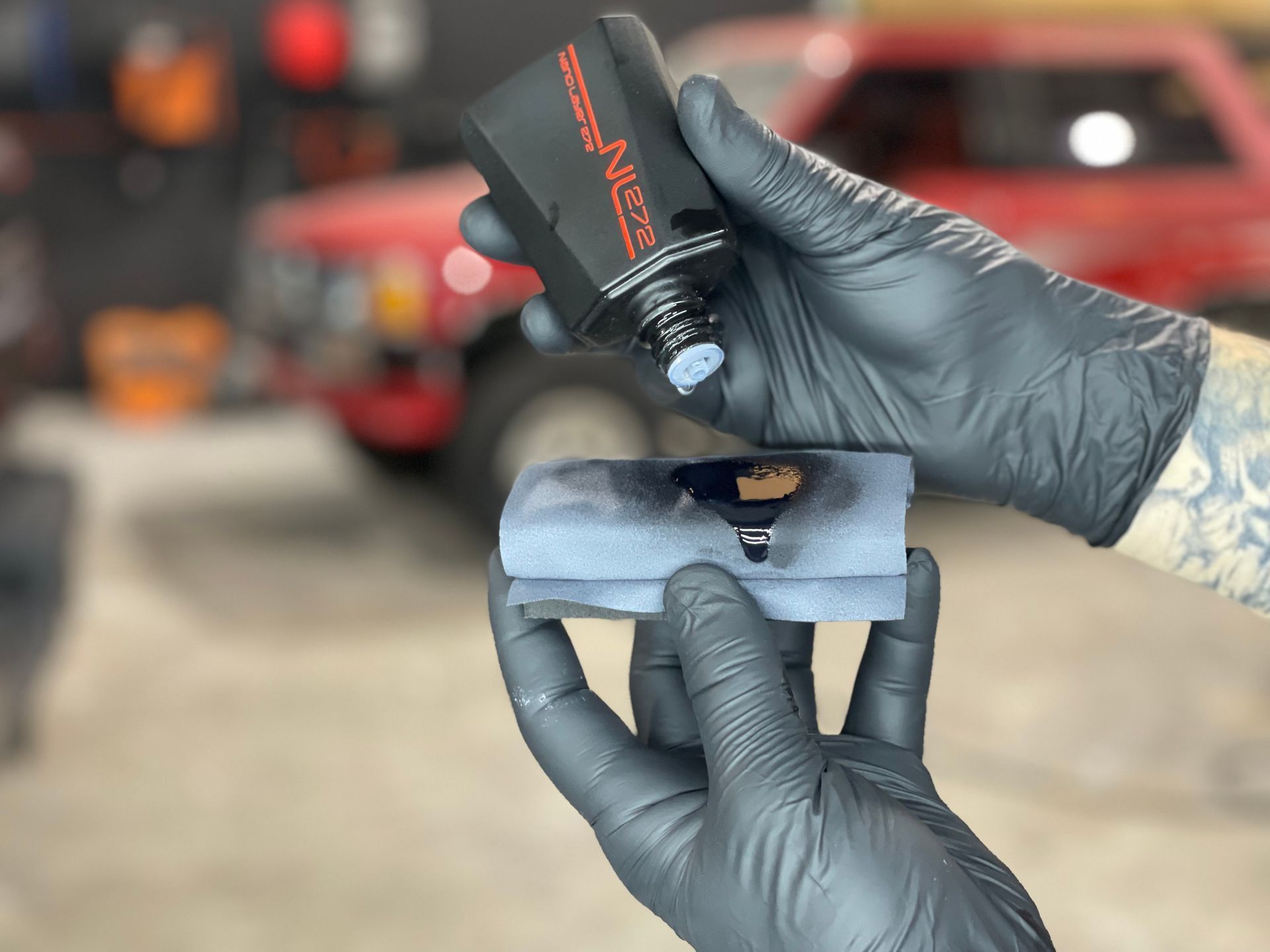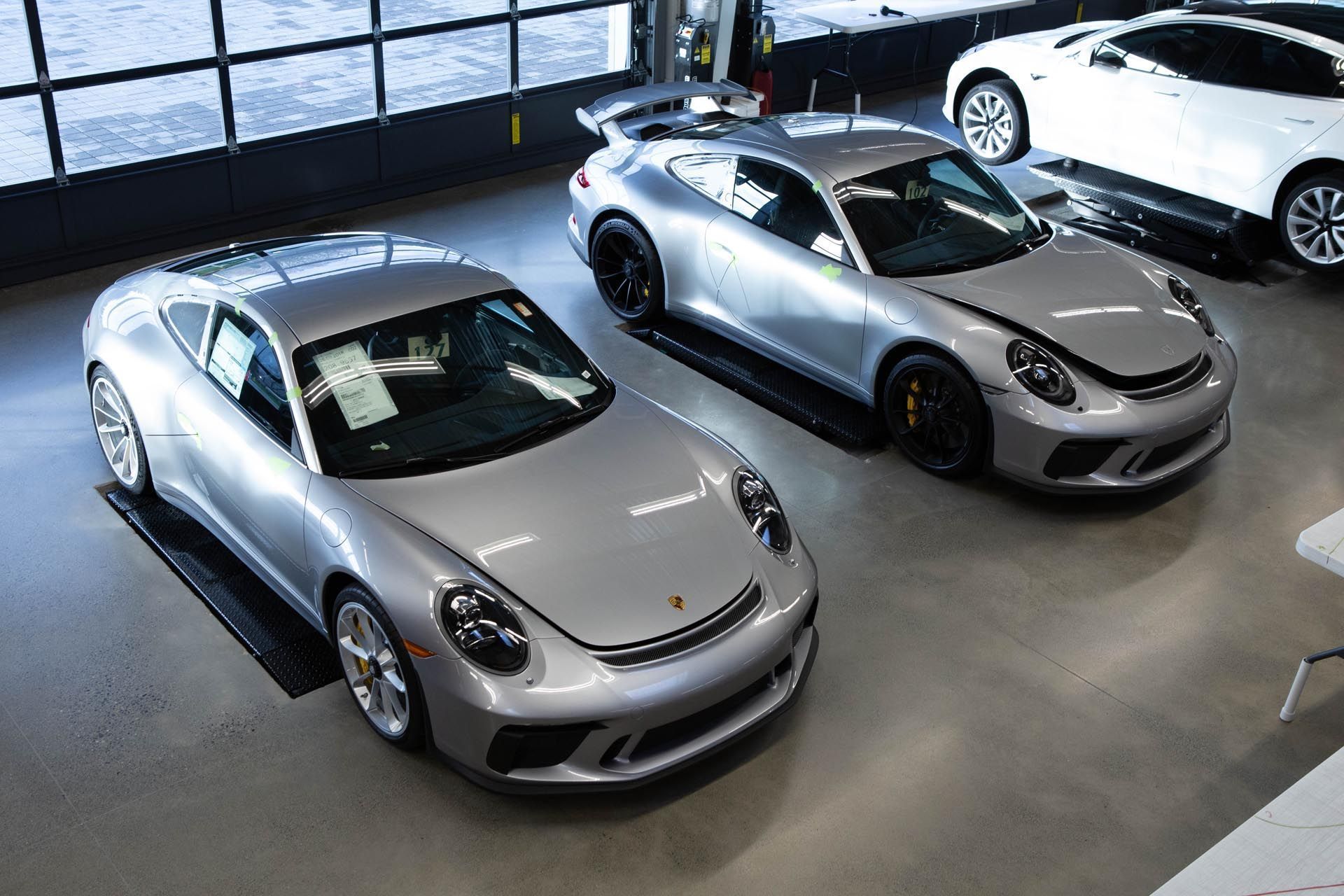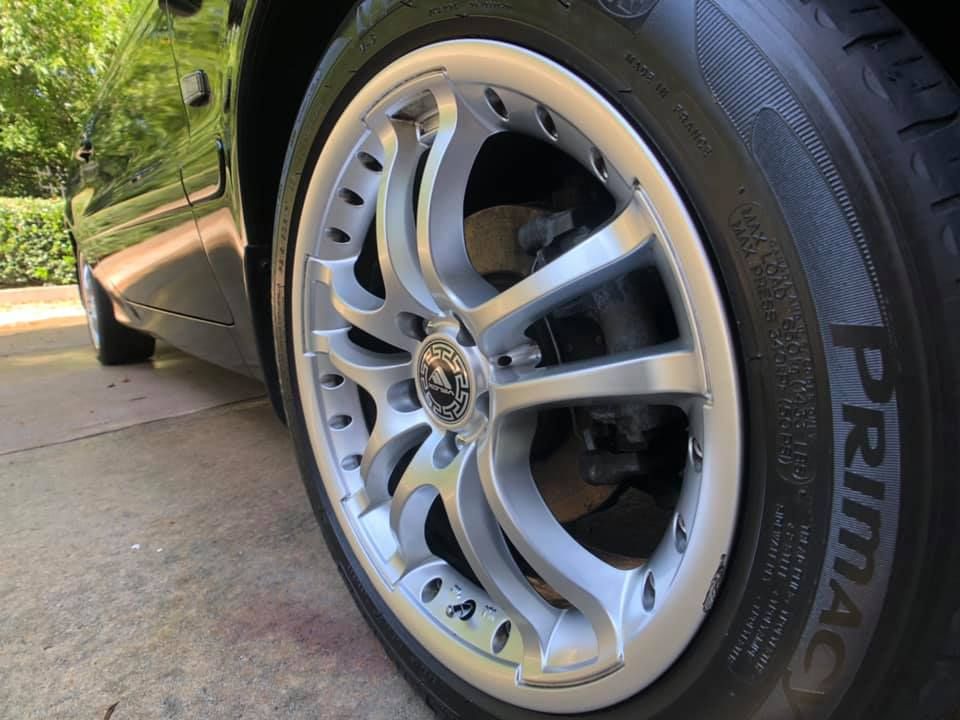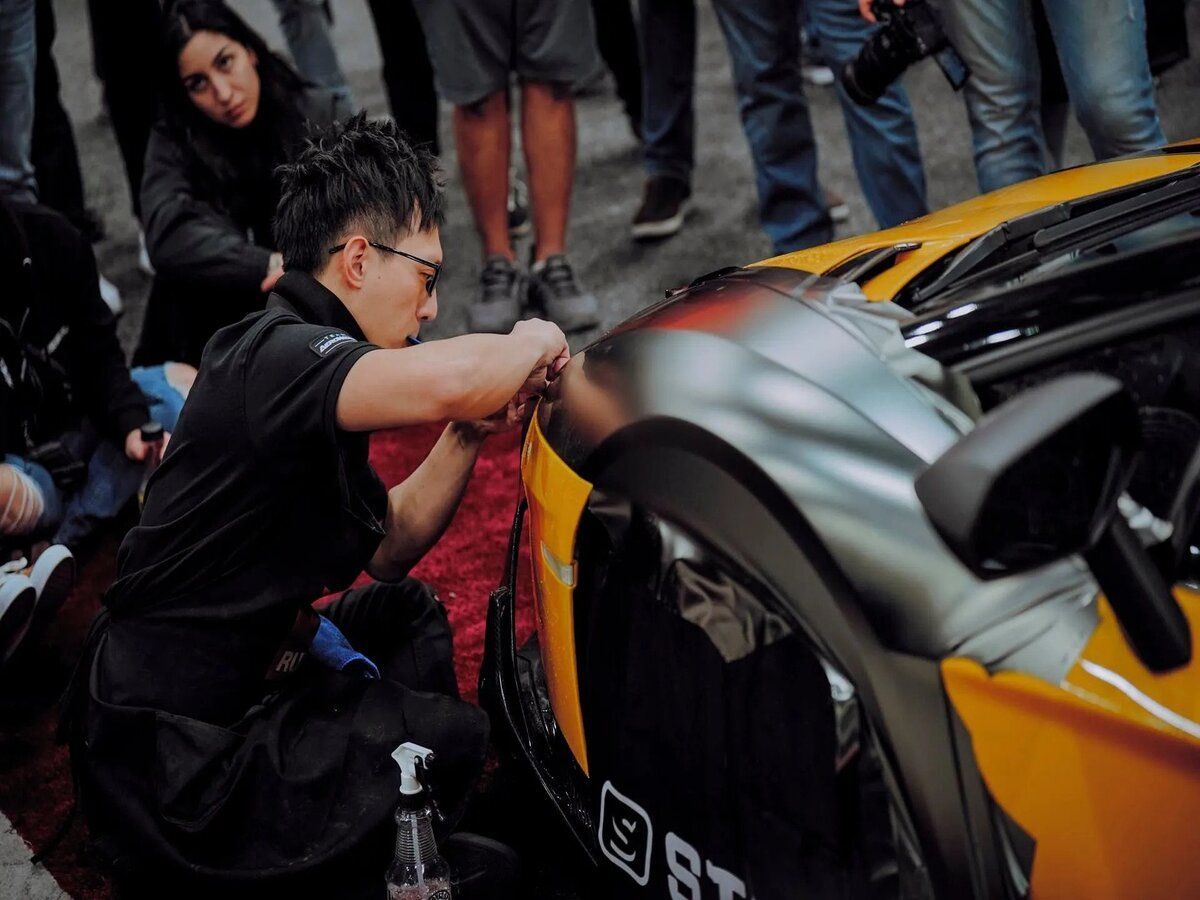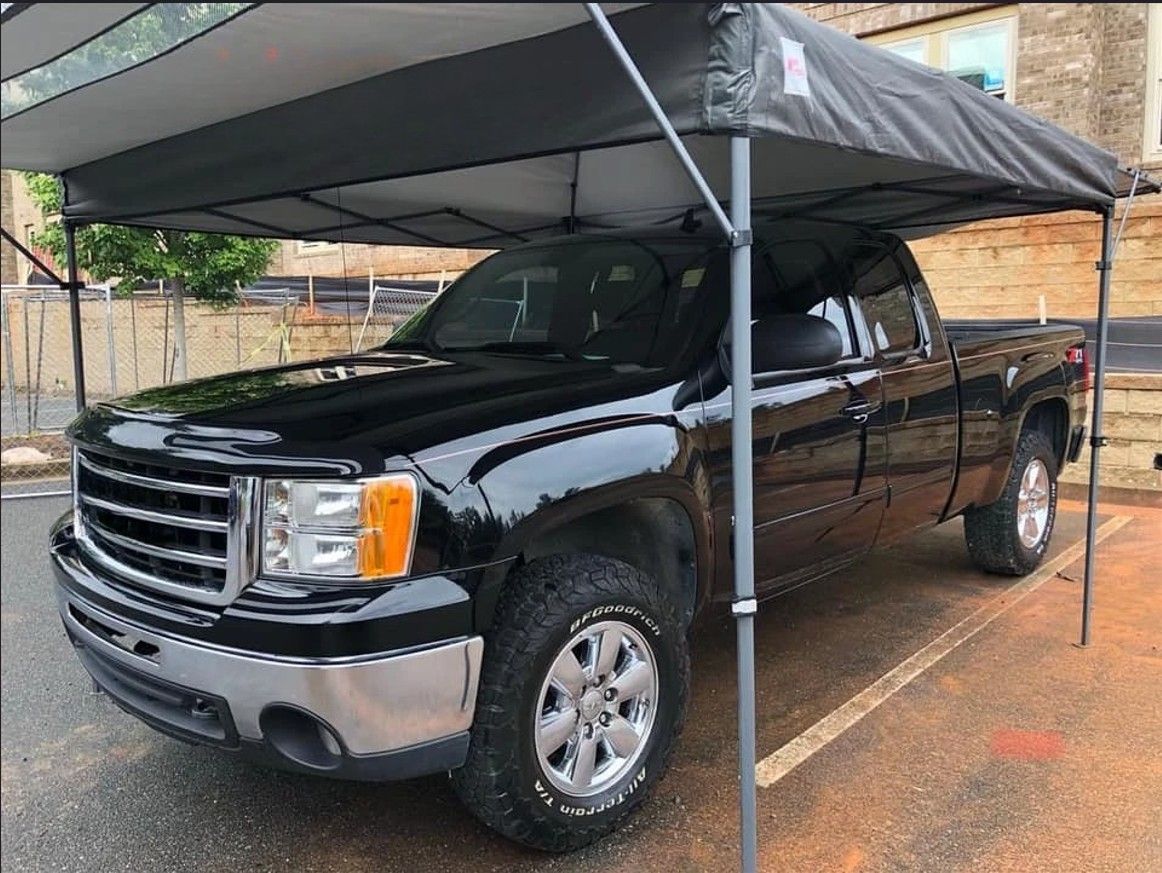How Paint Protection Film Adds Value to Your Vehicle
GET A QUOTECALL (770) 722-3486
Paint Protection Film confers superior protection to your car. Unlike other methods, like ceramic coating, it keeps your car safe from chips and the elements much more effectively. An added benefit of PPF is its role in maintaining the car's exterior aesthetics. It retains the vibrancy of the paint, augmenting the resale value of your vehicle in the long term.
The Impact of Paint Protection Film on Vehicle Quality
When you invest in a car, you want it to look its best for as long as possible. Paint protection film (PPF) is an ideal way to keep your vehicle looking newer and sharper for longer. It acts like a shield, safeguarding the paint from swirl marks and even small chips due to rocks or road debris. By keeping the exterior in pristine condition, PPF significantly contributes to preserving the overall quality and resale value of your vehicle.
Think of PPF as protective armor for your car’s paintwork. With its resistance against scratches and environmental damage, the film ensures that the colors remain vibrant and deep, giving your vehicle an appearance comparable to a brand-new car. This preservation of aesthetic appeal plays a critical role in enhancing the overall quality of your vehicle.
Additionally, the durability and protective properties of PPF contribute to a sense of reliability and trustworthiness in the vehicle's appearance. When a potential buyer sees that your car has been well cared for and is in impeccable condition thanks to the protective film, it can foster higher confidence and perceived value.
The maintenance of pristine paintwork through PPF also emphasizes attention to detail and care in vehicle ownership. It signifies to others that you take great pride in maintaining the quality and condition of your car. In essence, PPF doesn't just protect your car; it enhances its natural beauty and amplifies its overall quality, serving as a strategic investment in maintaining both aesthetics and long-term value.
Paint Protection Film: A Shield Against Chips and Scratches
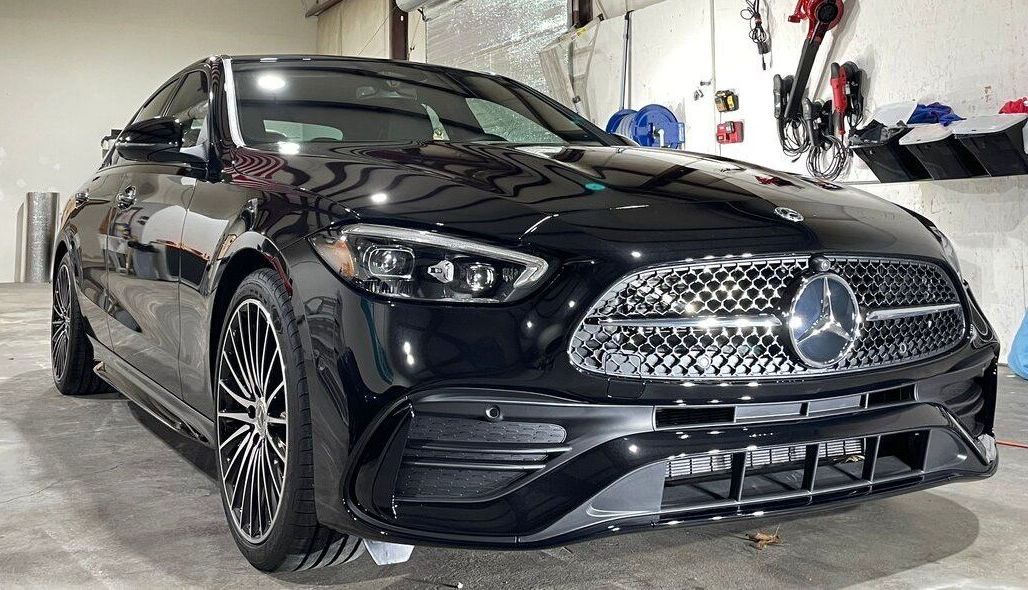
Paint Protection Film creates a protective layer between your car’s paint and the outside elements—road debris, minor impacts, and abrasions. This layer absorbs the impact of small flying rocks, curbs, or any other foreign objects that could otherwise mark your car's exterior.
How PPF Safeguards Your Car
The PPF provides a physical barrier that absorbs the force of small impacts, reducing the risk of chipping or scratching your vehicle's paint. It acts as a shield to keep your car looking sharp and new for longer by preventing unsightly chips and scratches that can result from daily road hazards. This offers longevity to your car’s pristine finish, preserving its beauty for years to come. Without PPF, all those nicks and scratches gradually build up and detract from the overall appearance of the paint. But with PPF in place, these imperfections are minimized, maintaining the sleek look of your vehicle.
Protection from Road Debris
PPF protects your car from road debris like stones, gravel, or sand that other vehicles or strong winds may throw up. These particles can be quite abrasive and would normally leave visible chips or scratches on unprotected surfaces. However, with PPF acting as a strong yet transparent barrier, these hazards are repelled before they have a chance to cause damage. This feature is particularly valuable for cars frequently traveling through construction zones or areas with loose gravel roads, where the risk of stone chips is heightened. As we unravel how PPF shields our cars from chips and scratches, let's delve into its self-healing capabilities and how it maintains the optical clarity of your vehicle's finish.
How Investing in Paint Protection Film Secures Your Vehicle's Future
Investing in
paint protection film (PPF) is akin to purchasing an insurance policy. It offers lasting benefits that extend beyond the immediate preservation of your vehicle's appearance. When you opt to equip your car with PPF, you're making a shrewd investment that can profoundly impact the vehicle's resale value.
It's all about maintaining that first impression and instilling confidence in potential buyers that they are investing in a vehicle that has been meticulously cared for. As a result, cars equipped with PPF generally have a higher resale value compared to those without it.
Moreover, the protective nature of PPF shields the original paintwork from various environmental stressors, like exposure to UV rays, acid rain, road salt, or bird droppings. PPF acts as an invisible barrier, safeguarding the exterior of your car against such elements without compromising its aesthetic appeal.
The decision to invest in PPF goes beyond mere surface protection. It secures not just the appearance but also the long-term value of your vehicle—a decision that can pay off significantly down the road.
As we consider how paint protection film fortifies your vehicle, it's crucial to understand the essential steps for preparing before installation, ensuring optimal results for your prized possession.
Preparing for Paint Protection Film Installation
Installing paint protection film is a valuable investment in preserving the appearance and value of your vehicle. To ensure a successful and long-lasting application, thorough preparation is key. Here are essential steps to prepare for the installation process:
Clean the vehicle thoroughly.
Before the installation of paint protection film, it's crucial to thoroughly clean the vehicle's surface. This meticulous cleaning process serves two important purposes:
- Ensuring Proper Adhesion: The cleanliness of the surface is vital, as any dirt or contaminants trapped beneath the film can affect its adhesion, potentially leading to bubbling or lifting over time.
- Preventing imperfections: A clean surface makes sure that the film won't hide any flaws or blemishes in the paint, which could reduce its protective and aesthetic benefits.
To achieve this level of cleanliness, professional auto detailers often use specialized cleaning agents and equipment designed to remove any traces of dirt, grease, or wax from the vehicle's exterior. By meticulously cleaning every nook and cranny, they create an ideal canvas for the paint protection film to be applied seamlessly.
Professional Inspection
In addition to thorough cleaning, a comprehensive inspection of the vehicle's exterior is imperative before applying the paint protection film. Experienced professionals carefully examine every inch of the vehicle's surface to identify any pre-existing damage or imperfections that may require attention prior to installation. This detailed inspection is essential for several reasons:
- Identifying Imperfections: It allows professionals to spot any existing scratches, swirl marks, or chips in the paint that warrant repair before the film is applied.
- Preserving Aesthetics: Addressing these imperfections beforehand ensures that the final result is a flawlessly protected and visually appealing surface.
- Protecting Against Underlying Damage: Identifying hidden damage such as corrosion or rust early on prevents these issues from worsening under the film over time.
By addressing any underlying issues proactively, this step not only promotes a seamless and polished outcome but also contributes to the long-term durability and effectiveness of the paint protection film. The meticulous approach taken during these preparation steps sets the stage for a resilient and visually stunning outcome that effectively safeguards your vehicle against various environmental hazards.
Choosing Professional vs. DIY Installation of Paint Protection Film
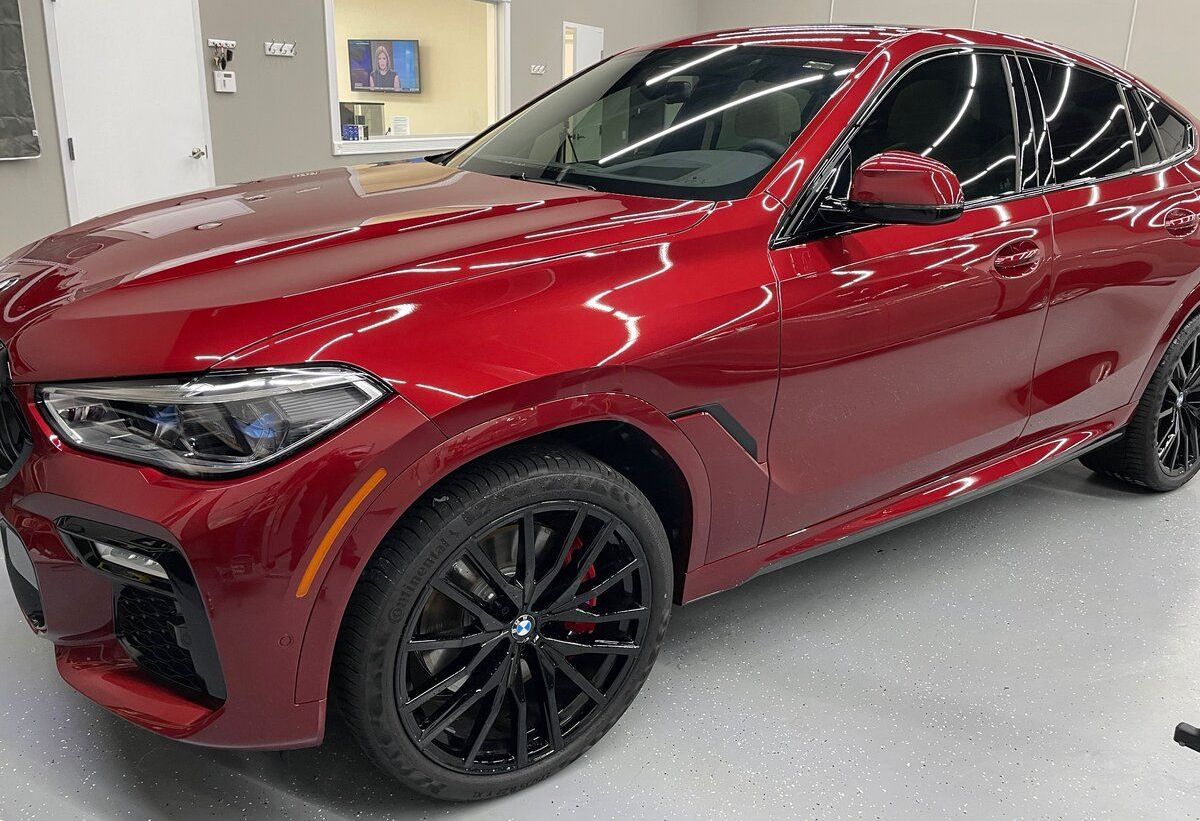
Deciding on the method of installation for your paint protection film (PPF) is a crucial step in ensuring the best outcome for your vehicle. Let's take a closer look at the different aspects of professional versus DIY installation to help you make an informed decision.
Professional Installation
When you opt for professional installation, you are leveraging the expertise of trained technicians well-versed in handling PPF. Their experience contributes to precise application, proper alignment, and minimal risk of errors. Moreover, professional installers are equipped with high-quality tools and facilities, ensuring a seamless application that maximizes the protective benefits of the film.
DIY Installation
On the other hand, DIY installation kits cater to enthusiasts preferring a hands-on approach to applying PPF. While offering a sense of accomplishment and potential cost savings, this approach demands a high level of skill, meticulous attention to detail, and considerable patience. Now that we've contrasted the attributes of professional and DIY installations, consider key factors such as cost, durability, and overall finish to make an informed choice that aligns with your preferences and expectations. With a clearer understanding of installation methods for paint protection film, let's now explore choosing the perfect PPF for your car.
Selecting the Perfect Paint Protection Film for Your Car
Choosing the right paint protection film for your car is akin to finding the perfect paint color for your home. It needs to fit your personality, provide the right amount of protection, and, of course, look great! So, let’s consider some critical factors when selecting the ideal paint protection film for your car.
- Consider the level of protection required. Depending on where you live and how often you drive, your car might be exposed to different kinds of hazards. If you frequently drive in an area with loose gravel or construction debris, you'll need a more robust film compared to someone who primarily uses their car for city commuting. Getting a thicker film ensures maximum protection against rock chips, scratches, and road debris.
- The visual clarity of the film. A high-quality paint protection film should be practically invisible once applied to your car’s surface. After all, what's the point of protecting your vehicle if it looks like it's covered in plastic wrap? Look for a film that has exceptional clarity and won't yellow or discolor over time. This way, your car's color will still shine through without any distortion.
- Opt for films that come with a strong warranty, indicating the manufacturer’s confidence in their product. Look for films that offer at least a five-year warranty against yellowing, cracking, peeling, staining, and hazing.
- It's also important to choose films that adhere to dealer-approved manufacturing standards. This criterion ensures that the film is durable and won't deteriorate over time due to exposure to heat or UV rays.
In summary, when selecting a paint protection film for your car, it’s important to ascertain the level of protection required based on how and where you drive, ensure excellent visual clarity, and opt for high-quality films that are durable and adhere to dealer-approved manufacturing standards. These considerations will ensure optimal protection and longevity for your vehicle while keeping it looking sleek and stylish at the same time.
In conclusion, choosing the right paint protection film can significantly enhance the appearance and longevity of your car's exterior while providing peace of mind on the road.
Why Choose LeJeune Ceramic Coating & Paint Protection for Paint Protection Film?
At LeJeune Ceramic Coating & Paint Protection, we understand that your vehicle is not merely a mode of transportation; it's a symbol of your lifestyle, passion, and investment. As the go-to destination for
paint protection in Marietta, GA, we have honed our expertise to perfection, setting the bar high for quality and commitment. Our team comprises seasoned professionals with an extensive background in PPF applications. We've mastered the art of precision, ensuring that every inch of your vehicle receives the protection it deserves. Your trust in us is met with a level of expertise that transcends industry standards. Book now!

